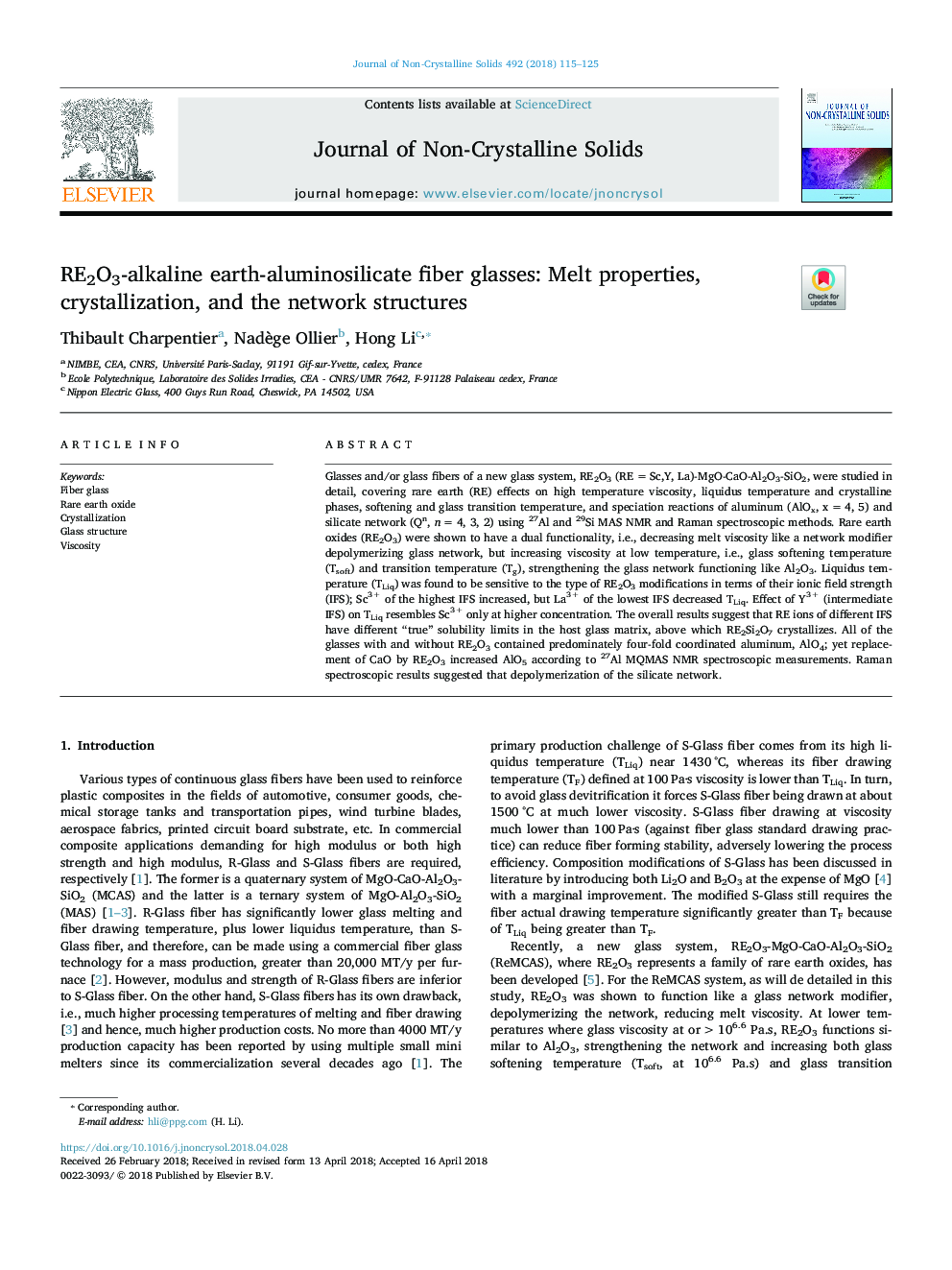| Article ID | Journal | Published Year | Pages | File Type |
|---|---|---|---|---|
| 7899854 | Journal of Non-Crystalline Solids | 2018 | 11 Pages |
Abstract
Glasses and/or glass fibers of a new glass system, RE2O3 (REâ¯=â¯Sc,Y, La)-MgO-CaO-Al2O3-SiO2, were studied in detail, covering rare earth (RE) effects on high temperature viscosity, liquidus temperature and crystalline phases, softening and glass transition temperature, and speciation reactions of aluminum (AlOx, xâ¯=â¯4, 5) and silicate network (Qn, nâ¯=â¯4, 3, 2) using 27Al and 29Si MAS NMR and Raman spectroscopic methods. Rare earth oxides (RE2O3) were shown to have a dual functionality, i.e., decreasing melt viscosity like a network modifier depolymerizing glass network, but increasing viscosity at low temperature, i.e., glass softening temperature (Tsoft) and transition temperature (Tg), strengthening the glass network functioning like Al2O3. Liquidus temperature (TLiq) was found to be sensitive to the type of RE2O3 modifications in terms of their ionic field strength (IFS); Sc3+ of the highest IFS increased, but La3+ of the lowest IFS decreased TLiq. Effect of Y3+ (intermediate IFS) on TLiq resembles Sc3+ only at higher concentration. The overall results suggest that RE ions of different IFS have different “true” solubility limits in the host glass matrix, above which RE2Si2O7 crystallizes. All of the glasses with and without RE2O3 contained predominately four-fold coordinated aluminum, AlO4; yet replacement of CaO by RE2O3 increased AlO5 according to 27Al MQMAS NMR spectroscopic measurements. Raman spectroscopic results suggested that depolymerization of the silicate network.
Related Topics
Physical Sciences and Engineering
Materials Science
Ceramics and Composites
Authors
Thibault Charpentier, Nadège Ollier, Hong Li,
